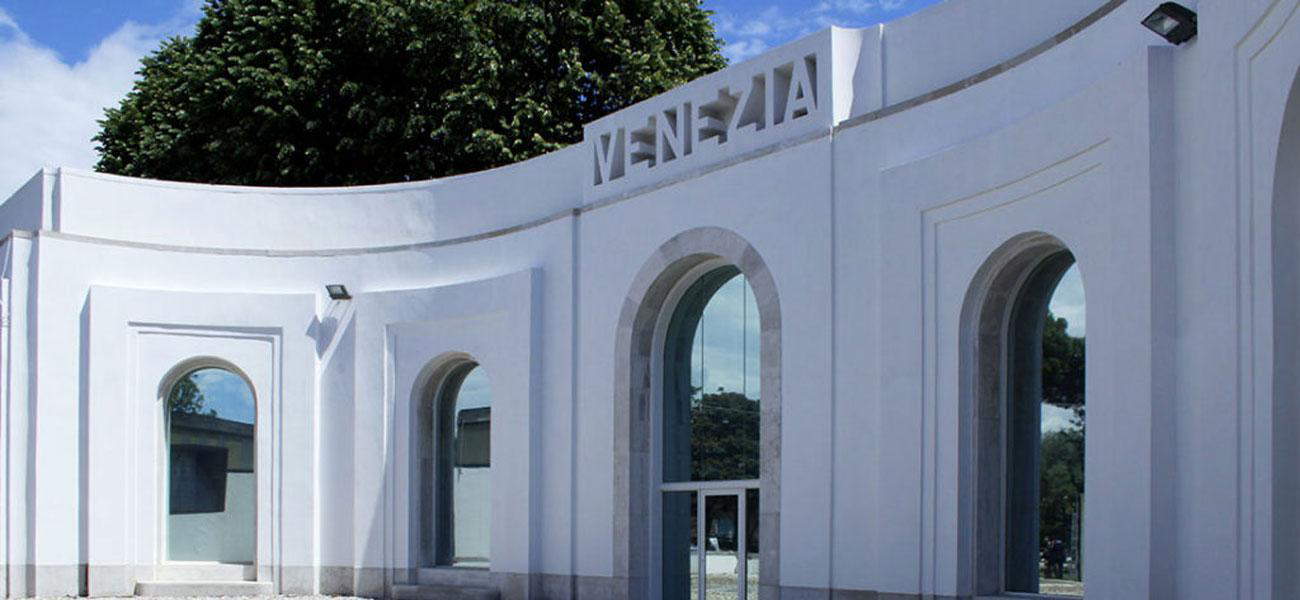Biennale, controversy over Venice Pavilion without statute: cultural figures write to city hall
A letter sent to the City of Venice to request the opening of a dialogue on the Venice Pavilion at the Biennale, or the city-owned pavilion located at the Giardini along with the other national pavilions. Several Venice cultural figures, including writer Tiziano Scarpa, gallerists Michela Rizzo and Alberta Pane, the director of GAM in Turin Chiara Bertola, and artists Maria Morganti and Thomas Braida, have come together in an association, Venezia c’è, and are directly addressing the mayor and his staff at the Directorate for Development and Promotion, the Culture, Activities Culture and the City’s Cultural Productions Service to ask that the Venice Pavilion be given its own statute and scientific committee, just as the Italian Pavilion does, with annual curatorial calls, and by linking up with local and international realities operating in Venice.
The first missive was sent to Mayor Luigi Brugnaro and his staff as early as last March 8, although the signatories of the letter complain that they have received no response from the administration. So now they have decided to make the issue a public case, also in order to open a dialogue with the citizenry, and demand at least a discussion in the City Council.
“As a group of men and women citizens, representatives in various capacities of the Venetian cultural ecosystem,” the petitioners begin, “we turn to you to propose a reflection and establish a dialogue aimed at extending and developing the work done so far by your Administration within the Venice Pavilion at the Biennale gardens. As You well know and support, in the last ten years, the cultural ferment of the Metropolitan City has been growing and expanding. New realities such as exhibition spaces, foundations, educational programs, interdisciplinary research centers, private galleries, artist studios, and associations that are open year-round and run by people who reside in the city are doing valuable work-often not very visible-while contributing significantly to the creation and maintenance of a vital system through the exchange between artists, practitioners, and the public. Thanks to this sociocultural fabric, the city is gradually opening up to innovative experiments in the direction of a rapprochement between the city’s cultural institutions with an international scope and the local art scene, testifying to the fact that artistic production in this area is qualitatively relevant and deserves to be supported at both the production and exhibition levels.”
“To go along with this virtuous trend,” the letter continues, “we believe it is urgent to trigger a choral reflection that enriches the commitment demonstrated by the City Council with the Artefici del nostro tempo project, in order to develop a series of measures aimed at strengthening the role of the Venice Pavilion as a leading exhibition space in the representation of the city’s cultural context that is sensitive to contemporary languages and open to the world.”
“For this reason, we believe that the Pavilion should provide itself with an official statute, clarifying the criteria of its cultural mission by adapting its functioning to that of other national pavilions - in particular the Italian Pavilion. To this end, we consider it necessary to create a scientific committee that would restore the heterogeneity of the city’s cultural system from the perspective of plural dialogue. This body would have the function of drafting a call for proposals aimed at selecting one curatorial project per year - according to the Art/Architecture alternation - whose main purpose would be aimed at the innovative interpretation and enhancement of the city’s emerging cultural production. In this way, anyone - without limits of age or nationality - would be put in the conditions to deepen and develop narrative systems capable of restoring the vitality proper to the city’s cultural ecosystem in its heterogeneity.”
In the photo: the Venice Pavilion
 |
| Biennale, controversy over Venice Pavilion without statute: cultural figures write to city hall |
Warning: the translation into English of the original Italian article was created using automatic tools. We undertake to review all articles, but we do not guarantee the total absence of inaccuracies in the translation due to the program. You can find the original by clicking on the ITA button. If you find any mistake,please contact us.





























